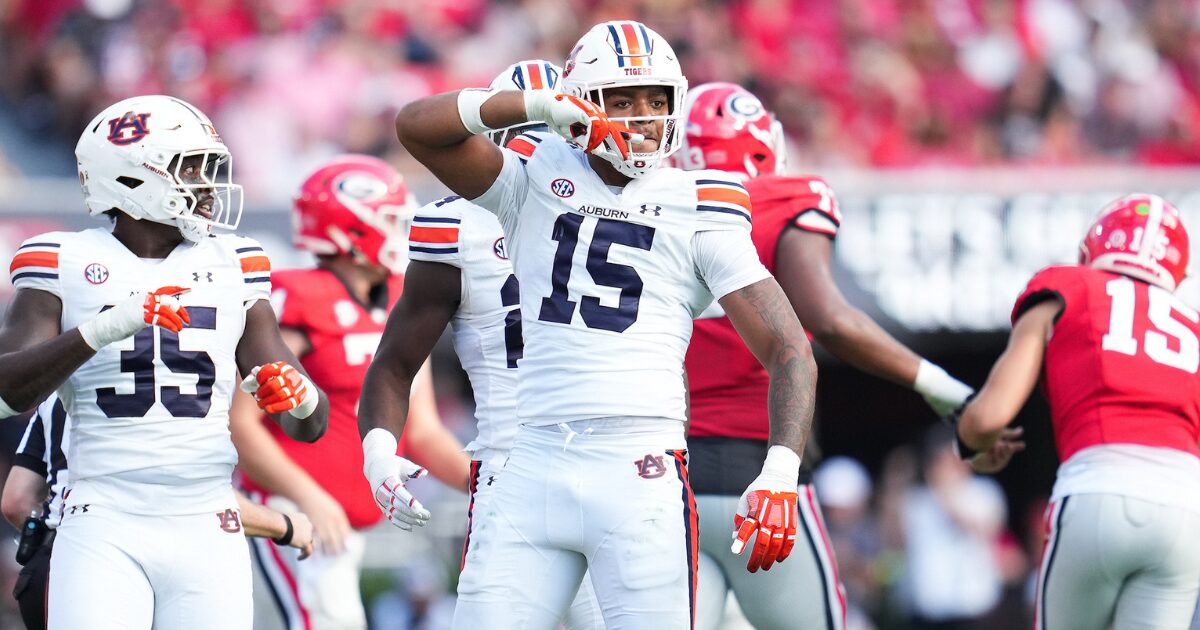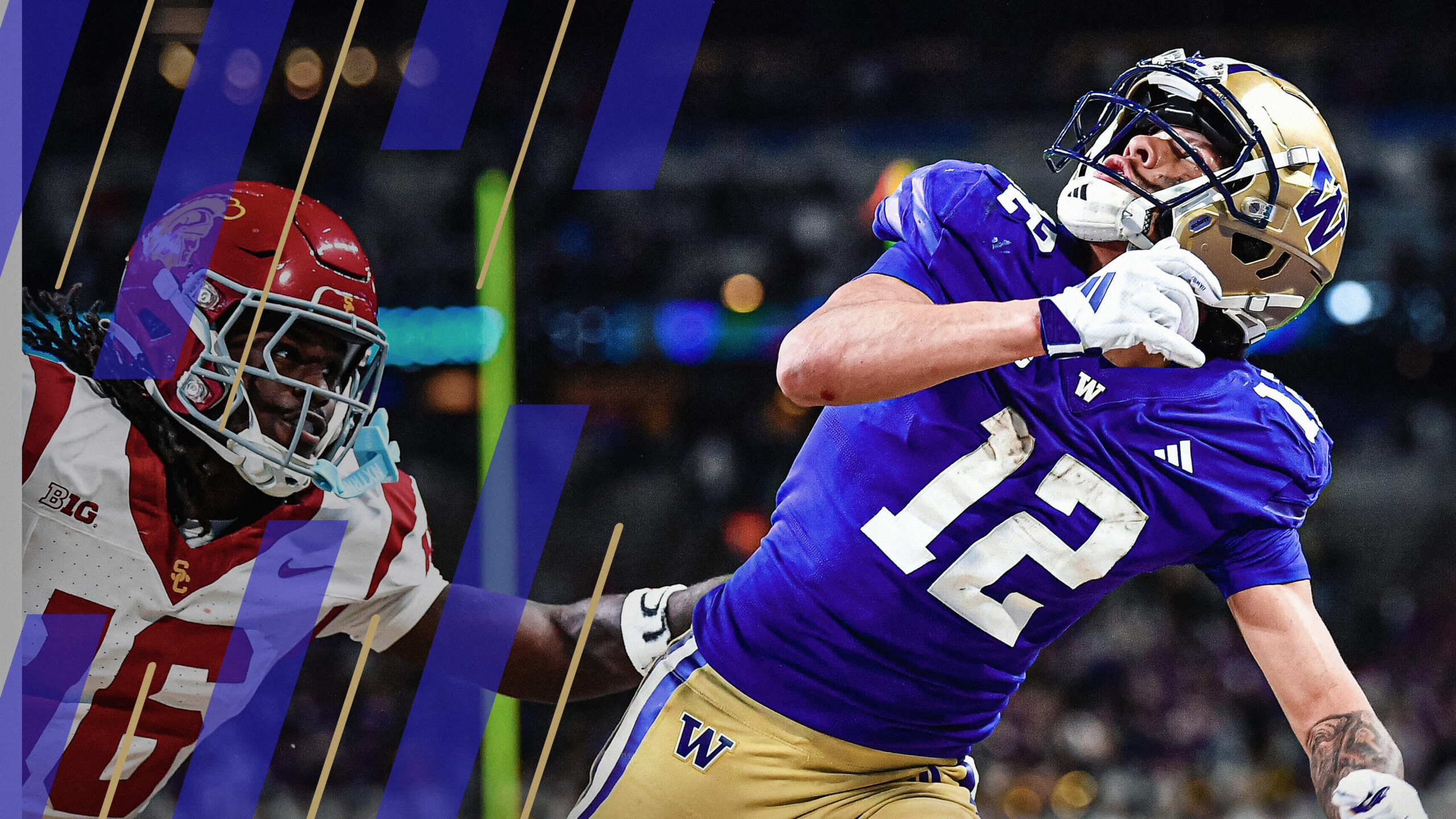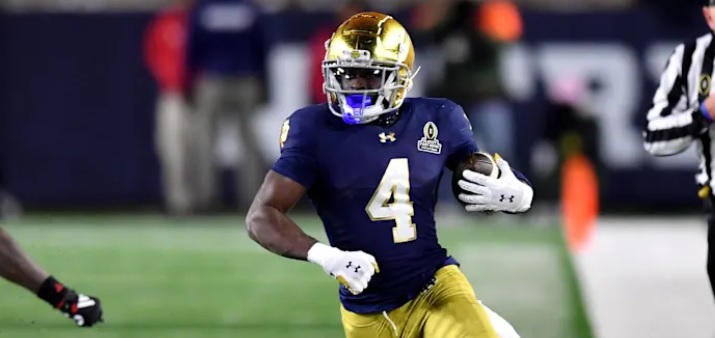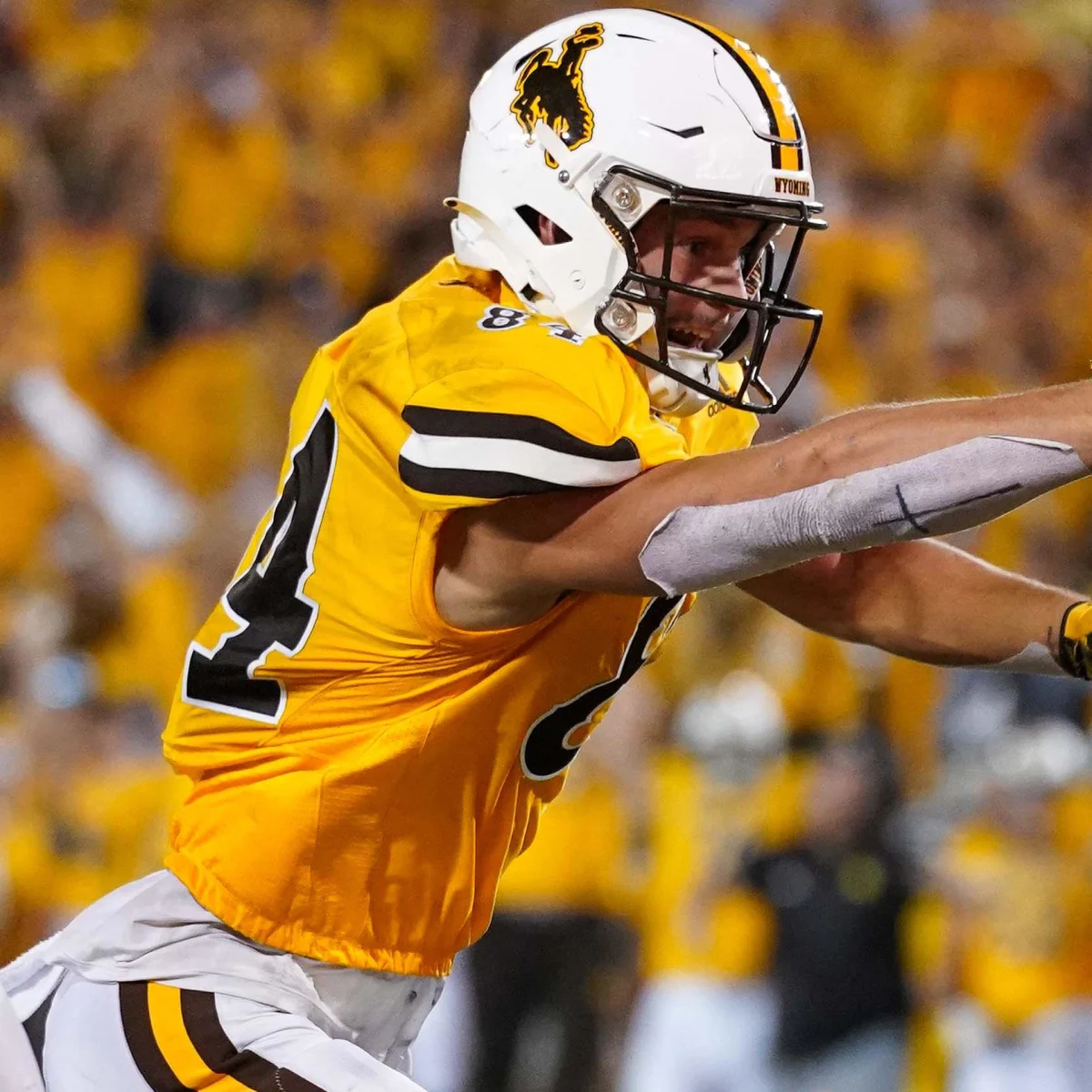By Charlie Campbell.
Send Charlie an e-mail here: [email protected]
Follow Charlie on Twitter @draftcampbell for updates.
This page was last updated April 11, 2013. Follow me @walterfootball for updates.
Position Review: Centers
Center Class
Early-round talent: B
Mid-round: C+
Late-round: D+
Overall grade: B-
2012 prospects vs 2013
Peter Konz > Travis Frederick
Ben Jones < Barrett Jones
Philip Blake < David Quessenberry
Gino Gradkowski < Brian Schwenke
David Molk < Dalton Freeman
Mike Brewster < Khaled Holmes
Quentin Saulsberry < Braxston Cave
William Vlachos < Mario Benavides
This year’s draft class features a stronger group of centers compared to the 2012 NFL Draft; last year’s class was extremely weak. Konz was the first center selected in the 2012 NFL Draft, and he went late in the second round. Only five centers were drafted in all seven rounds. Five or six centers should be taken in the 2013 NFL Draft, and the latter two or three in this list also have a shot at being selected.
If you were to mix the classes, Barrett Jones would be my first-ranked center. I like him more than any other center prospect. Thus my rankings by attribute could be skewed by my high opinion of Jones.
However, Jones probably will go behind Frederick and won’t be a second-rounder like Konz was. Konz and Frederick are about equal, but I would give the edge to Konz because he is a more natural center and a lot more mobile than Frederick. Ben Jones, Blake and Gradkowski would all go behind Schwenke. That trio of 2012 picks is comparable to Freeman and Holmes.
Brewster, Saulsberry and Vlachos all went undrafted last yeasr, and I could see that as a possibility for Cave and Benavides. All five of those centers are pretty comparable, but Brewster had the best collegiate career of the group. Plus, WalterFootball.com has heard from sources that the Jaguars think he has a future in the NFL.
If you include North Carolina’s Jonathan Cooper, he would be the top-ranked center in either class and the only one graded out as a first-rounder. If Cooper is included, the class would receive an additional boost.
Safest Pick: Barrett Jones, Alabama

I have no doubt about Jones turning into a good quality starting offensive lineman in the NFL. He looked like a natural center in 2012. Jones has the strength, speed and technique to be a quick starter.
Coaches are going to love Jones’ intelligence. He enjoyed making the line calls and did a good job of setting the protection. Jones could also play guard and maybe tackle in the NFL. He’s going to be a good one. I think Jones is going to turn into a 10-year starter and Pro Bowler.
Biggest Bust Potential: Travis Frederick, Wisconsin

This only is in regard to center, since Frederick should, at worst, be a solid guard in the NFL. The 6-foot-4, 312-pounder is a poor fit for center. He is not as mobile as most teams want their centers to be as a result.
Frederick also can struggle with speed-rushers, and if he were a center in the NFL, he would see a lot of speed tackles being matched up against him. Frederick doesn’t fit a zone-blocking system either. If he is forced into center, there is the capacity for him to go bust.
As far as the other prospects, it is hard to label a mid-to-late rounder a bust.
Center Rankings by Attributes
Pass Protection:
NFL prototype: Max Unger, Seahawks
- Barrett Jones
- Brian Schwenke
- David Quessenberry
- Dalton Freeman
- Travis Frederick
- Mario Benavides
- Khaled Holmes
- Braxston Cave
Recap: The NFL is all about the passing offense, so centers must be be an asset at protecting the quarterback and helping to keep a clean pocket. They need to be able to stop interior blitzes, bull rushes from heavy nose tackles, speed rushes from three-techniques and double-teams effectively. Fortunately for teams needing a center, this year’s class has some good pass-blockers.
Jones (6-5, 311) is, in my opinion, the best of the bunch. Not many centers can be chosen as the nation’s best offensive lineman at left tackle, but that is what Jones accomplished as a junior. He was tremendous in pass blocking the past four years at guard, tackle and center. Jones was generally rock solid as a senior. A speed-rusher from Texas A&M, Spencer Nealy, and a heavy tackle from Mississippi State, Dewayne Cherrington, gave Jones some challenges.
Jones excelled against LSU’s speed-rushers. He closed out the year by handling Georgia’s and Notre Dame’s tough defenses despite a broken foot. Jones should be an extremely reliable pass-protector in the NFL because he is such an intelligent technician.
Schwenke (6-3, 307) answered a lot of questions at the Senior Bowl with an excellent week of practice. He showed the ability to anchor against bull-rushers and the athletic ability to handle speed-rushers. Quessenberry (6-5, 294) was similar, and both players look like they have the potential to be good pass-protectors in the NFL.
Pass blocking is Freeman’s best attribute. The undersized center (6-5, 285) is very quick and athletic. He did extremely well protecting Tajh Boyd in 2012. However, Freeman struggled with large nose tackles at the Senior Bowl, which will be a problem for him until he can add a lot more weight.
Frederick performed pretty well as a junior, but in the NFL, he’s going to have some challenges with speed-rushers. Benavides had a mixed year as a pass-protector. He had some excellent games, including dominating North Carolina’s Sylvester Williams early in the year, and others where he didn’t impress. He really struggled against Sharrif Floyd and Florida in the Sugar Bowl, but quarterback Teddy Bridgewater consistently bailed him out.
Holmes had some real struggles as a senior in pass protection. He had some good games, but was dominated by Utah’s Star Lotulelei and struggled mightily against UCLA.
Cave had a good senior year, but he struggled when he went against good pass-rushers. Purdue’s Kawann Short gave him a lot of problems in their matchup during the season and at the Senior Bowl. Cave is going to need to significantly improve his pass protection before he can start in the NFL.
Run Blocking:
NFL prototype: John Sullivan, Vikings
- Travis Frederick
- Barrett Jones
- Braxston Cave
- David Quessenberry
- Brian Schwenke
- Khaled Holmes
- Mario Benavides
- Dalton Freeman
Recap: The Badgers had a lot of success running behind Frederick the past two seasons. He can push defensive linemen around and open holes on the ground. Frederick is a good fit in a power man-blocking scheme and can be very effective in short-yardage situations.
Jones was an excellent run-blocker for Alabama for all four of his seasons. Mark Ingram, Trent Richardson and Eddie Lacy all had a ton of success running behind Jones. He has enough strength to move linemen and wins with excellent technique. Jones also beats defenders to spots to hit blocks.
Cave’s best attribute is his run blocking. He had a strong 2012 season opening up holes for Notre Dame’s stable of backs. Quessenberry and Schwenke are quality run-blockers who win more with speed and technique rather than power. Quessenberry should develop into a better run-blocker in the NFL because he has the frame to add more bulk, while Schwenke probably can’t get much bigger.
Holmes and Benavides were solid run-blockers who did not impress as seniors. Freeman likely could only function in a zone-blocking scheme in the NFL. He doesn’t have the size or strength to move linemen at the point of attack.
Speed:
NFL prototype: Maurkice Pouncey, Steelers
- Dalton Freeman
- David Quessenberry
- Brian Schwenke
- Barrett Jones
- Khaled Holmes
- Mario Benavides
- Braxston Cave
- Travis Frederick
Recap: Freeman is the fastest center in the 2013 NFL Draft, but he also is the lightest. Schwenke and Quessenberry are both very quick off the snap and are able to pull well. All three of those centers are fast to hit blocks on the second level.
Jones has underrated quickness. Alabama showed off some creativity and flexibility in 2011 by occasionally lining up Jones as a tight end next to the right tackle. The Crimson Tide picked up some big runs coming behind that unbalanced line with Jones and D.J. Fluker leading the way.
Holmes has quickness and could be higher on this list, but he played with an injury for a lot of his senior year. That knocked him out of the Senior Bowl as well. It makes it harder to rate Holmes’ real ability.
Benavides moves pretty well, but he lost about 10-15 pounds for his senior year. The NFL will probably want him to gain that back, and he may lose some of his speed by doing that.
Neither Cave or Frederick are fast centers. Their games are all about power at the point of attack, and neither of them are centers who are going to hit a lot of blocks on the run.
Strength:
NFL prototype: Nick Mangold, Jets
- Travis Frederick
- Barrett Jones
- Braxston Cave
- Brian Schwenke
- David Quessenberry
- Khaled Holmes
- Mario Benavides
- Dalton Freeman
Recap: This was an easy choice. Frederick is clearly the strongest center of the group. He can push linemen around and make them look like they are on roller skates. Frederick has a lot more power than any other center.
Jones is second. He showcased more power when he played heavier as a guard in his first two years at Alabama. Jones trimmed down for center, but he could add that weight in the NFL. Jones has the strength to push linemen out of their gap, but could use a little more power for the next level.
Cave has good power to his game. He used it to be an effective run-blocker in 2012. Schwenke answered some concerns about his power with an impressive performance at the Senior Bowl. He was should use strength to push defenders.
Quessenberry is interesting. He hides his 295 pounds very well and definitely could add another 20 pounds to his 6-foot-5 frame. Strength isn’t one of his best assets right now, but he could develop that early on in his NFL career.
Holmes also flashed strength against weaker opponents, but needs more strength for the NFL. Benavides and Freeman, on the other hand, have to add muscle for the NFL. Both of them need significant work in the weight room before either will be ready to play.
Zone Blocking:
NFL prototype: Chris Myers, Texans
- David Quessenberry
- Dalton Freeman
- Brian Schwenke
- Barrett Jones
- Mario Benavides
- Khaled Holmes
- Braxston Cave
- Travis Frederick
Recap: The athletic Quessenberry might be the best fit as a zone-blocking center in the NFL. He is tall, quick and lean, which all dovetail to make him a perfect fit to be part of the moving wall of a zone-blocking scheme. His length should also help him to fight off defenders trying to get penetration through the line.
Freeman and Schwenke both are fast centers, so either would fit well in a zone-blocking system. Freeman probably can’t play anything else. Jones isn’t a perfect fit in a zone-blocking scheme, but he could adapt to it if he is drafted into one.
Benavides and Holmes could potentially play in a zone-blocking scheme. Cave and Frederick are terrible misfits for a zone-blocking scheme. Neither of them is quick enough or athletic enough for such a system. Frederick is by far the worst center for an NFL zone-blocking scheme.
Power-Man Blocker:
NFL prototype: Maurkice Pouncey, Steelers
- Barrett Jones
- Travis Frederick
- David Quessenberry
- Braxston Cave
- Brian Schwenke
- Khaled Holmes
- Mario Benavides
- Dalton Freeman
Recap: One might think that Jones is a surprise choice here. Yes, Frederick is bigger and stronger than Jones, but a big aspect of a power man-blocking scheme is a center who can pull and hit blocks on linebackers on the edge, or fire to the second level off the snap to seal an isolation block on a middle linebacker. Jones is clearly better at that than Frederick. Jones also can move linemen at the point of attack like Frederick can. Because Jones can execute the system better in a variety of ways, he’s the top prospect for a power man-blocking scheme.
If Quessenberry fills out his frame, he could thrive in a power-man scheme. Cave has already played the scheme well, so he should stay in it in the NFL. Schwenke has the ability to get it done, and he could be better if he is able to add some bulk.
Holmes has played in a man system as well, but with mixed results. Again, his injured senior season makes it harder to elevate him. Benavides would be better in a zone scheme. Freeman is too small to play power man, and he must go to a zone scheme in the NFL. No power-man team should draft him.
Versatility:
NFL prototype: Mike Pouncey, Dolphins
- Barrett Jones
- David Quessenberry
- Travis Frederick
- Brian Schwenke
- Khaled Holmes
- Braxston Cave
- Mario Benavides
- Dalton Freeman
Recap: It is not even close, Jones is clearly the most versatile offensive lineman in the 2013 NFL Draft class. He was an All-American and/or All-SEC selection at left tackle, guard and center over the past four seasons. His experience at center, guard and tackle will make him a huge asset on game days. If an injury happens, a team has a lot of options in which backup to play because Jones could move to guard or tackle. He is a rare luxury for offensive line coaches.
The second choice was as easy. Quessenberry can play guard or center, and possibly right tackle. Jones was ranked first because he has more experience at the other positions than Quessenberry.
Frederick has started at guard and center. I think he’ll find a home at guard in the NFL, but if his center goes down, Frederick could move over to man the middle.
Holmes might be able to move to guard in the NFL if he can add more power. Neither Cave nor Benavides looks like he could play guard in the NFL. Freeman barely has the size necessary to play center in the NFL, so there is no way he could move to any other position on the offensive line.
Intelligence:
NFL prototype: Matt Birk, Ravens
- Barrett Jones
- Mario Benavides
- David Quessenberry
- Braxston Cave
- Khaled Holmes
- Dalton Freeman
- Brian Schwenke
- Travis Frederick
Recap: The intelligence of Jones is well-known. He has the reputation a being nerd off the field and was a master violin player growing up. Jones loved making the line calls for Alabama and studied to learn the best calls to defend a variety of blitzes. He told WalterFootball.com that the film study was one of his favorite parts of moving to center.
Jones’ line calls will be an asset to his NFL offense, especially if he is ever playing with a young inexperienced quarterback who needs help with that. Jones was a 4-year starter and has gone against elite talent every year. Mentally, he’s as NFL ready as any lineman could be.
None of the rest of the centers look like he is lacking intelligence. Benavides seemed to do a good job of setting the protections and worked well with Teddy Bridgewater. Quessenberry and Cave both showed some quick learning in picking up the coaches’ teaching points at the Senior Bowl.
Holmes, Freeman and Schwenke all are experienced centers who should be capable of making good calls in the NFL. Frederick has less experience after moving to center during the 2012 season. He also entered the draft early, so he may need more classroom development than the rest of the class.
|
|
NFL Power Rankings - Dec. 23
NFL Picks - Dec. 22
2026 NFL Mock Draft - Dec. 17
Fantasy Football Rankings - Sept. 1




